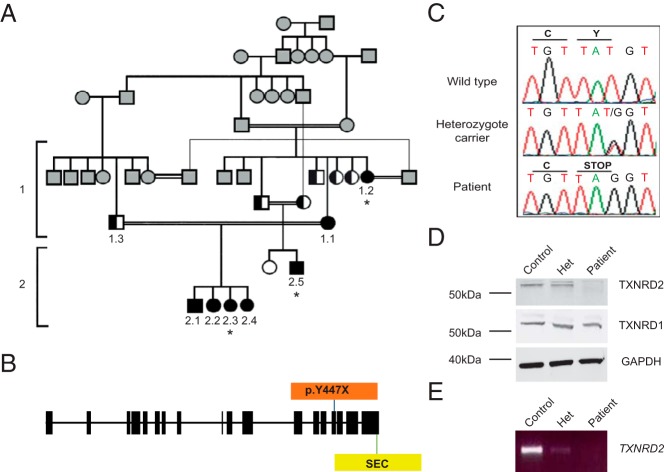Figure 1.
Pedigree of the affected kindred and identification of p.Y447X TXNRD2 mutation leading to the loss of TXNRD2 protein. A, Pedigree of affected patients. Black-filled symbols indicate individuals homozygous and half-filled indicate individuals heterozygous for the mutation. White-filled symbols indicate wild-type individuals. Gray-filled symbols indicate individuals not tested. The asterisks denote the three affected individuals who were subjected to whole-exome sequencing. B, Gene structure of TXNRD2; p.Y447X mutation prior to the selenocysteine active site (SEC). C, Partial sequence chromatograms of genomic DNA from a wild-type, heterozygote carrier and a patient, showing the base change from T to G in exon 15, resulting in a premature stop codon in the affected individual. D, Lysates from a homozygous patient, heterozygote carrier, and control human lymphocytes were immunoblotted with an anti-TXNRD2 antibody. Although the control and the heterozygote carriers expressed the 56-kDa protein, this is absent in the homozygote patient, with no evidence of a truncated protein. All individuals express cytoplasmic TXNRD1 normally. E, RT-PCR of cDNA from the patient, heterozygote carrier, and control suggested nonsense mediated decay of mRNA.

